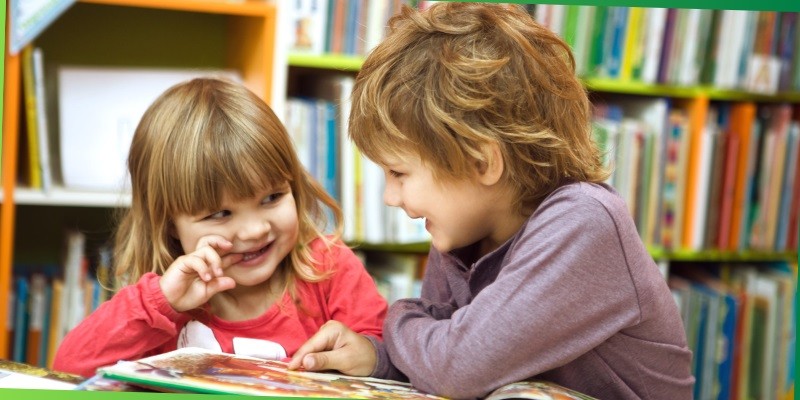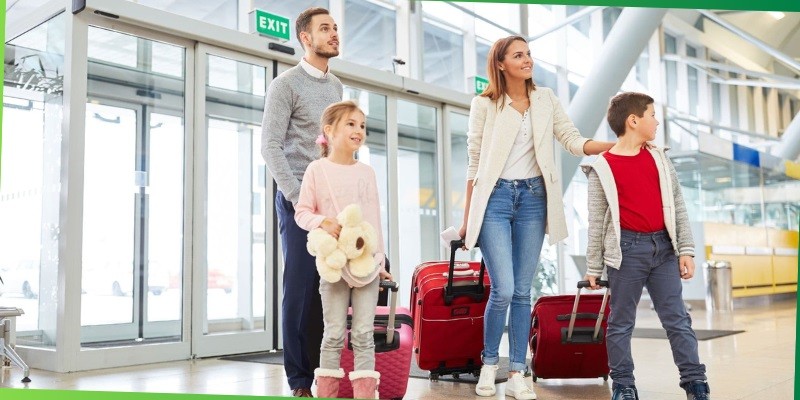Last Updated on January 15, 2025
To deescalate a child, ensure calm communication and offer supportive guidance throughout the process. Children can become easily overwhelmed or agitated in certain situations, leading to challenging behaviors.
As a parent, caregiver, or educator, it is essential to know how to effectively deescalate a child to promote their emotional well-being and maintain a positive environment. By employing techniques that encourage open and supportive communication, you can help children regulate their emotions and resolve conflicts peacefully.
This article will explore various strategies to deescalate children, emphasizing the importance of empathy, active listening, and problem-solving. By incorporating these approaches, adults can create a safe and empowering environment that fosters the emotional growth and development of children.
Recognizing Triggers For Escalation
Deescalating a child can be a challenging task for parents and caregivers. One key to successfully managing emotional outbursts and preventing escalation is to identify the triggers that lead to these challenging behaviors. By recognizing the environmental factors, emotional cues, and behavioral patterns that contribute to a child’s escalation, we can effectively intervene and create a calmer environment for them to thrive in.
Identifying Environmental Factors
Environmental factors play a significant role in a child’s behavior and emotions. By understanding how the child’s surroundings can impact their well-being, we can make necessary adjustments to prevent or minimize triggers. Here are some ways to identify and address environmental triggers:
- Keep an organized and clutter-free environment to avoid sensory overload.
- Create a safe and predictable routine, providing a sense of stability and security.
- Ensure the child has a designated quiet space where they can retreat when feeling overwhelmed.
- Consider introducing calming elements like soft lighting, soothing music, or sensory toys to promote relaxation.
Recognizing Emotional Cues
Emotional cues can serve as warning signs that a child is becoming overwhelmed or entering an escalated state. By being attuned to their emotional cues, we can intervene early and prevent the situation from escalating further. Here are some emotional cues to watch out for:
- Expressions of frustration, anger, or sadness.
- Changes in body language, such as tensed muscles or clenched fists.
- Increased heart rate, rapid breathing, or other physical signs of distress.
- Verbal expressions of distress, such as crying, shouting, or whining.
Observing Behavioral Patterns
Behavioral patterns are helpful indicators of a child’s emotional state and can assist in identifying triggers for escalation. By closely observing and analyzing their behaviors, we can gain insight into what situations or stimuli may lead to distress. Here are some behavioral patterns to keep an eye on:
- Aggression towards self, others, or objects.
- Withdrawal or refusal to engage in activities they previously enjoyed.
- Regression in development, such as bedwetting or thumb-sucking.
- Changes in sleep patterns, appetite, or energy levels.
By paying attention to the child’s environment, emotional cues, and behavioral patterns, we can become better equipped to recognize triggers of escalation. Armed with this knowledge, we can intervene early, implement coping strategies, and provide support to help the child regain control of their emotions. In the next section, we will explore effective deescalation techniques to help diffuse challenging situations.

Credit: www.psychologicalhealthcare.com.au
Applying Calming Techniques
Deescalating a child can be a challenging task, but by applying effective calming techniques, you can help them regain control and promote a peaceful environment. It is important to create a safe and secure space where the child feels comfortable expressing their emotions without fear of judgment or punishment. Utilizing deep breathing exercises contributes significantly to their emotional regulation and mental well-being. Active listening and validation are key aspects of effective communication, allowing the child to feel heard and understood. In this section, we will delve deeper into these techniques and explore how to implement them successfully.
Promoting A Safe And Secure Environment
A safe and secure environment is crucial for deescalating a child. You can achieve this by creating clear boundaries and providing a supportive space where they can freely express their emotions. Make sure they feel comfortable approaching you and sharing their concerns without any fear of reprimand. By maintaining a calm and non-judgmental demeanor, you can build trust and foster open communication. When children feel safe, they are more likely to cooperate and respond positively to calming techniques.
Utilizing Deep Breathing Exercises
Deep breathing exercises are highly effective in calming a child during moments of distress. Encourage the child to take slow, deep breaths, inhaling deeply through their nose and exhaling through their mouth. This simple technique helps regulate their heart rate and activates the body’s natural relaxation response. It is also beneficial to practice these exercises together, allowing the child to observe your own calmness and follow your lead. By incorporating deep breathing exercises into their daily routine, you can empower the child to manage their emotions more effectively.
Emphasizing Active Listening And Validation
Active listening and validation play a vital role in deescalating a child. When they feel listened to and understood, it reduces their anxiety and promotes emotional stability. Help the child feel heard by maintaining eye contact and offering your full attention. Repeat back their thoughts and feelings to validate their experiences, using phrases like “I understand how you feel” or “That sounds really challenging.” Acknowledge their emotions without judgment and avoid dismissing or belittling their concerns. By emphasizing active listening and validation, you create a safe space for them to express themselves and work towards finding peaceful resolutions.
Implementing these calming techniques in a consistent and compassionate manner can make a significant difference in deescalating a child. Remember that each child is unique, and it may take time to find the approaches that resonate best with them. By creating a safe environment, practicing deep breathing exercises, and emphasizing active listening and validation, you empower the child to manage their emotions more effectively and promote a harmonious environment for their overall well-being.
Implementing Effective Communication Strategies
Discover effective communication strategies to deescalate children and promote understanding. Implement proven techniques to diffuse challenging situations and create a peaceful and harmonious environment.
Teaching and modeling effective communication skills
One of the most vital factors in deescalating a child is to teach and model effective communication skills. By doing so, you are equipping the child with the necessary tools to express their emotions and needs in a more constructive manner. To achieve this, consider the following strategies:
- Show them how it’s done: Children learn best by observation, so it’s crucial for adults to model effective communication skills. This involves speaking calmly and respectfully, actively listening, and using non-verbal cues such as maintaining eye contact and open body language.
- Provide clear instructions: Clear and concise instructions can help a child understand and respond appropriately. Use simple language and avoid ambiguity. For instance, instead of saying “Don’t do that,” say “Please keep the volume of your voice lower.”
- Use visual aids: Visual aids can enhance understanding, particularly for younger children or those with learning difficulties. Incorporate pictures, diagrams, or visual schedules to assist in conveying information and expectations effectively.
Encouraging empathy and understanding
Developing empathy and understanding in children is essential for deescalating challenging situations. Through empathy, children can recognize and validate their own emotions while also appreciating the feelings of others. To encourage empathy and understanding, try the following techniques:
- Perspective-taking activities: Engage children in activities that help them see situations from another person’s perspective. For example, you can utilize role-play scenarios or ask questions like, “How do you think your friend felt when you took their toy without asking?”
- Emotional vocabulary: Expand a child’s emotional vocabulary by introducing them to a variety of emotions. Encourage them to label their own emotions and express how they feel. By understanding their emotions, they will be better equipped to communicate their needs effectively.
- Active listening: Practice active listening when engaging with the child. Give them your full attention, maintain eye contact, and provide affirmations like nodding or validating their feelings. When children feel heard, they are more likely to reciprocate and empathize with others.
Using positive reinforcement and redirection techniques
Positive reinforcement and redirection techniques can redirect a child’s negative behavior towards more positive and desirable actions. Here are some effective strategies to consider:
- Praise and rewards: Acknowledge and praise a child’s efforts and positive behavior. Be specific in your praise, highlighting the behavior you want to reinforce. For instance, say, “I appreciate how you waited patiently for your turn.”
- Redirection: Instead of focusing on the negative behavior, redirect the child’s attention towards a more appropriate activity or behavior. Offer choices that align with their interests and allow them to regain control and autonomy.
- Time and space: Provide the child with a designated area where they can cool down and process their emotions. This can be in the form of a calm-down corner or a quiet room. Encourage them to use this space whenever they feel overwhelmed or agitated.
Implementing effective communication strategies is crucial in deescalating children and preventing challenging behaviors from escalating further. By teaching and modeling effective communication skills, encouraging empathy and understanding, and utilizing positive reinforcement and redirection techniques, you can foster a healthier and more harmonious environment for your child.
Frequently Asked Questions For How To Deescalate A Child?
How Can I Deescalate A Child During A Tantrum?
To deescalate a child during a tantrum, stay calm, validate their feelings, offer choices, and provide a quiet space to regain control.
Why Is It Important To Listen To A Child During A Conflict?
Listening to a child during a conflict helps them feel understood, reduces frustration, and encourages them to communicate their feelings effectively.
What Is The Role Of Empathy In Deescalating A Child?
Empathy plays a vital role in deescalating a child as it allows you to understand their perspective, validate their emotions, and build a connection based on trust and understanding.
How Can I Redirect A Child’s Negative Behavior?
To redirect a child’s negative behavior, offer alternative activities or distractions, set clear expectations, and praise their positive actions when they occur.
Is It Effective To Use Time-outs When Deescalating A Child?
Using time-outs as a deescalation strategy can be effective when implemented properly, providing children with time to calm down and reflect on their behavior.
How Can Collaboration Help In Deescalating A Child?
Collaborating with a child during a conflict empowers them, fosters problem-solving skills, and nurtures a sense of responsibility and respect for others.
Conclusion
Deescalating a child’s emotions can be achieved through a combination of communication, empathy, and setting clear boundaries. By actively listening, offering reassurance, and providing appropriate alternatives, parents and caregivers can help children regulate their emotions in a healthy manner. Remember, every child is unique, so finding what works best for them may require some trial and error.
With patience and consistency, the skills learned through deescalation can have a positive impact on a child’s emotional well-being and overall behavior.







